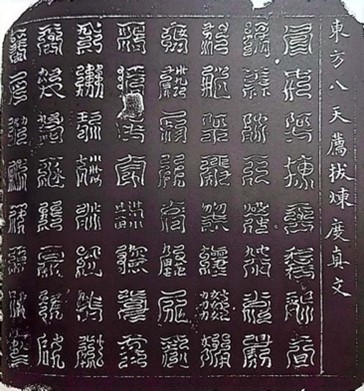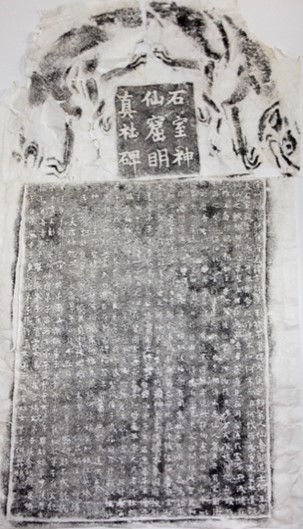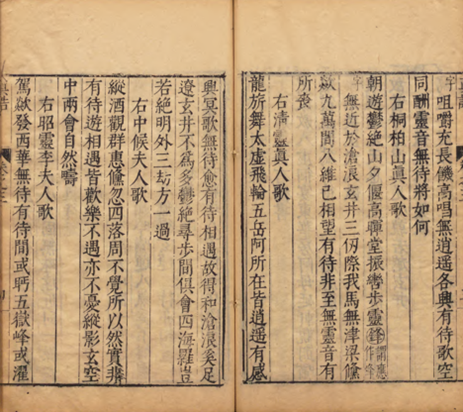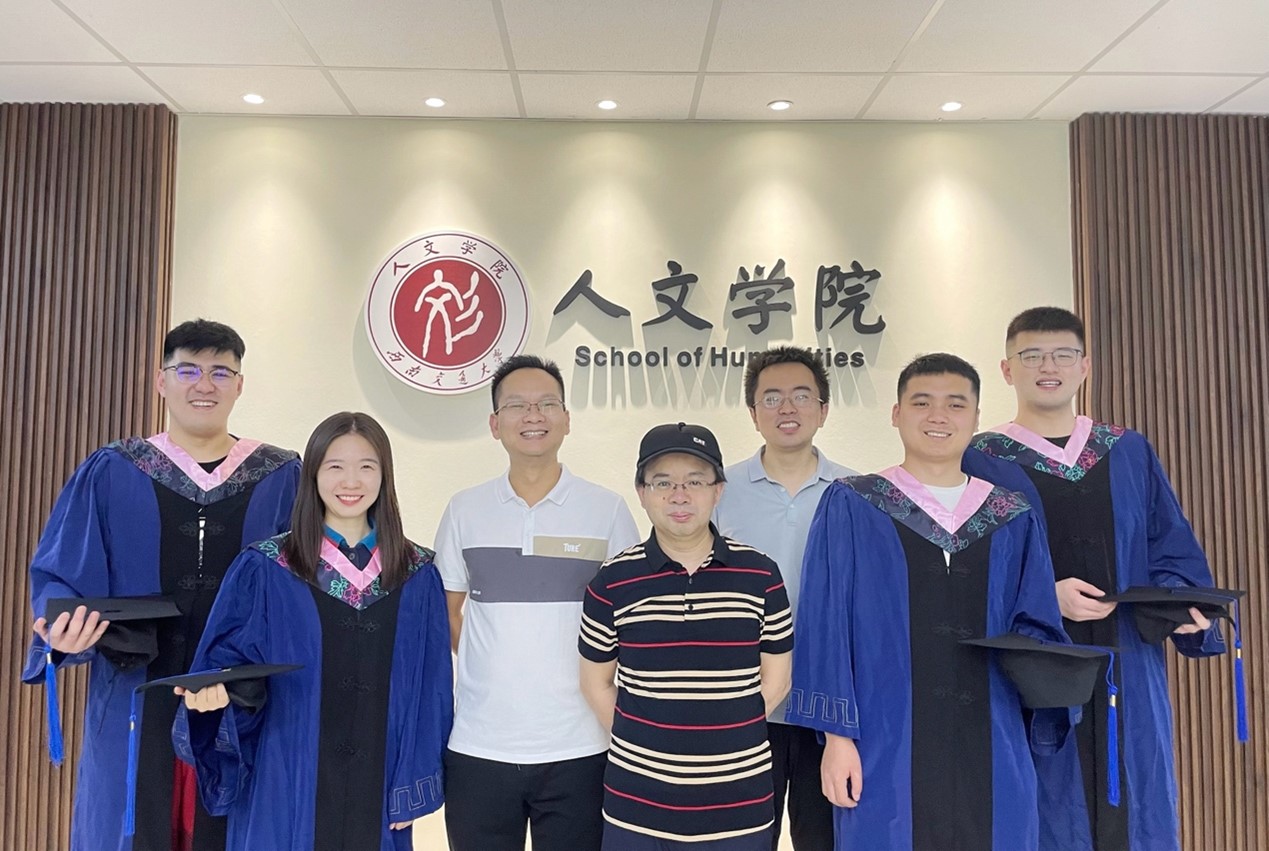

西南交通大學中國宗教研究中心
2020級碩士研究生順利通過學位論文答辯
2023年5月18日,西南交通大學人文學院哲學與歷史研究所舉行2020級碩士研究生學位論文答辯會。王蔚林、閆瑞、趙光偉、趙允嘉等四名宗教學方向的研究生均順利通過答辯,論文題目及摘要如下:
王蔚林《唐宋墓葬出土道教鎮墓真文石刻補論》(指導教師:趙川)
鎮墓真文石刻是唐宋墓葬出土的一類特殊石刻,其主體部分是道教雲篆。此類石刻具有很高的研究價值,但學界對其關注不多,未給予足夠的重視。本文首先全面整理了目前已經公開發表的鎮墓真文石刻材料,重新釋讀各石刻中的雲篆與其他普通文字。然後,運用考古類型學方法,根據石刻形制與內容的差異,將唐宋時期鎮墓真文石刻分為甲、乙兩類,甲類石刻的雲篆內容為五篇真文,乙類石刻的內容為諸天內音自然玉字。甲類可分為A、B、C、D四型,其中A型可細分為Aa、Ab二亞型,C型可細分為Ca、Cb二亞型;乙類可分為A、B、C、D、E、F、G、H八型,其中A型可細分為Aa、Ab、Ac三亞型,D型可細分為Da、Db二亞型,E型可細分為Ea、Eb、Ec三亞型,F型可細分為Fa、Fb二亞型,G型可細分為Ga、Gb二亞型。甲類Aa型的時代為北宋晚期,其餘各型均為南宋時期。乙類Aa型、Ab型、Ac型、B型和C型的時代均為唐代,Da、Fa型屬北宋,Db、Fb、Gb型石刻僅能確定為宋代,Ea、Eb、Ga型時代為北宋末年至南宋,Ec、H型均只發現有一方,時代為南宋。唐代僅發現乙類鎮墓真文石刻,而宋代則兩類均較為流行。
甲、乙兩類鎮墓真文石刻中雲篆的淵源可追溯至西元五世紀左右的道教古靈寶經,前者來自《元始五老赤書玉篇真文天書經》中五篇真文之第二、三科,後者來自《太上靈寶諸天內音自然玉字》。前人研究以“消災”或“八威”指代五篇真文,這一做法或是受到呂元素為規範分類而簡便命名方法的影響,但石刻上的標題並不固定,因此使用“消災”或“八威”來命名石刻並不準確。諸天內音鎮墓真文石刻的祝語表明唐、宋時期使用此類石刻的側重點不同,唐代側重於讓死者受煉成仙,宋代則是鎮墓安靈。
鎮墓真文石刻的變化反映了唐宋道教的發展與轉型。與唐代不同,隨著科舉制度成為官吏的主要來源,北宋時期社會階層發生了變化,券主不再是上層貴族,而是品級較低的官員及其家人、地方鄉紳和平民等。四川地區宋代墓葬普遍隨葬鎮墓真文石刻,表明其喪葬活動與道教儀式可能有著密切的關係。
Tomb-Quelling Carved Stones with True Writs are a special type of stone carving unearthed from Tang (618-907) and Song (960-1279) Dynasties tombs. The major part of their surface is engraved with unique Daoist cloud-seal script. This type of carved stone has high research value, but the academic community has not attached great importance to it. This paper first comprehensively collates the currently published Tomb-Quelling Carved Stones with True Writs, reinterpreting cloud-seal scripts and other common characters in each carved stone. Then, using archaeological typology, Tomb-Quelling Carved Stones with True Writs from the Tang and Song Dynasties were divided according to the differences in the form and content of the carved into two categories: 甲 and 乙, with the cloud-seal scripts content of the Class 甲 stone carvings being Wupian zhenwen, and the content of the Class乙 stone carvings being Zhutian neiyin. Class 甲 can be further divided into four types: A, B, C, and D. Type A can be subdivided into two subtypes: Aa and Ab, and type C can be subdivided into two subtypes: Ca and Cb. Class 乙 can be further divided into eight types: A, B, C, D, E, F, G, and H. Type A can be subdivided into three subtypes: Aa, Ab, and Ac. Type D can be subdivided into two subtypes: Da, and Db. Type E can be subdivided into three subtypes: Ea, Eb, and Ec. Type F can be subdivided into two subtypes: Fa, and Fb. Type G can be subdivided into two subtypes: Ga, and Gb. Class 甲 Aa can be dated to the late Northern Song Dynasty, while the other types date to the Southern Song Dynasty. Class 乙 Aa, Ab, Ac, B, and C types are all dated to the Tang Dynasty. The Da and Fa types date to the Northern Song Dynasty. The Db, Fb, and Gb types of stone carvings can only be dated to the Song Dynasty. The Ea, Eb, and Ga types date from the late Northern Song Dynasty to the Southern Song Dynasty. Only one of each of the Ec and H types has been found, and both date to the Southern Song Dynasty. Only Class 乙 Tomb-Quelling Carved Stones with True Writs were found dating to the Tang Dynasty, while both types were more popular in the Song Dynasty.
The origin of cloud-seal scripts in the two types of Tomb-quelling Carved Stones with True Writs can be traced back to the Daoist ancient Lingbao scriptures around the fifth century CE. The former comes from the second and third categories of the five Lingbao True Writs recorded in the Yuanshi wulao chishu yupian zhenwen tianshu jing (元始五老赤書玉篇真文天書經 Scripture on the True Writs of the Five Ancients of the Primordial Beginning, Red Writings in Celestial Script on Jade Tablets), and the latter comes from the Taishang lingbao zhutian neiyin ziran yuzi (太上靈寶諸天内音自然玉字 Lingbao Scripture on the Esoteric Sounds of the Spontaneously Created Jade-Characters in the Various Heavens). Previous studies have referred to Wupian zhenwen as "Xiaozai" or "Bawei", which was probably influenced by the simple naming method used by Lü Yuansu as a standard classification. As the titles on carved stones are not fixed, so using "Xiaozai" or "Bawei" to name carved stone is not accurate. The blessings on the Zhutian neiyin Tomb-Quelling Carved Stones with True Writs indicate that the emphasis on using such stone carvings during the Tang and Song dynasties was different. While in the Tang Dynasty the stones were used to refine the deceased into immortals, their Song Dynasty counterparts functioned to stabilize the tomb and secure the soul.
The changes in Tomb-Quelling Carved Stones with True Writs reflect the development and transformation of Daoism during the Tang and Song dynasties. Unlike the Tang Dynasty, the imperial examination system became the main source of officials in the Northern Song, leading to changes in social strata. The holders of official tokens were no longer upper-class nobles, but lower ranking officials and their families, local squires, and civilians. Based on Tomb-Quelling Carved Stones with True Writs in Song Dynasty tombs in Sichuan Province, we show the close relationship between the funerary activities and Daoist rituals of the time.

閆瑞《贛西北地區授籙文憑研究》(指導教師:呂鵬志)
授籙文憑是授籙法事的產物,是道壇給出的證明受籙人宗教身份的文書。文憑包括陰憑和陽憑,陰憑授籙時當壇焚化,上呈天界衙門;陽憑則由受籙人隨身佩奉,百年登真之際,隨其屍身羽化焚燒,屆時陰陽相合,方可位列仙階。
本文以贛西北地區正一派火居道士戴祥柳道長收藏的授籙文憑為研究對象,綜合運用古典文獻學、話語語言學、宗教史學三種學科方法,對文憑及其夾帶的勘合進行深入考察和研究。概括說明文憑的來源、形態、體例格式及內容,探究文憑的內涵及意義。對陽憑的疑難詞句進行考釋,如“三天門下”“花押”“心印”等。此外,文憑中粘貼的勘合與明《永樂大典》收錄的“正一盟威合同環券”高度相似,由此進一步考察勘合與環券的聯繫,並深入分析勘合的宗教內涵及其意義。對文憑的研究能夠幫助我們進一步理解道教的授籙儀式和制度,完善道教授籙體系,對授籙的恢復工作有積極的推動作用。
A diploma for register-transmission is the product of a ritual of the same name and is a document issued by a Daoist altar to prove the religious status of the recipient(受籙人). A diploma consists of an Yin diploma(陰憑)and a Yang diploma(陽憑). The Yin diploma is incinerated at the altar and transmitted to the heavenly bureaus; the Yang diploma is worn by the recipient and will be burned with his corpse at the time of his death and ascent to perfection, when the Yin and Yang diplomas are joined and the receiver is ranked as an immortal.
In this thesis, we take the copy of a diploma for register-transmission preserved by Daoist master Dai Xiangliu 戴祥柳 of the Zhengyi School in the northwest of Jiangxi province as the object of study. Using the methodologies of classical philology, textual linguistics and historical studies of religions, this thesis outlines the origin, form, format and content of the diploma, and explores its connotation and meaning. It also examines and explains the difficult words and phrases of the Yang diploma, such as "Chancellery of the Three Heavens"(三天门下), "Signature"(花押)and "Cypher/Koan "(心印), etc. In addition, the "contract to be cut into halves" (Kanhe 勘合) pasted in the diploma is very similar to the "Contract of the Covenant with Powers of Orthodox Oneness"(正一盟威合同環券)included in the Yongle Da Dian 永樂大典 of the early Ming (1368-1644). This thesis further investigates the connection between these two contracts and analyzes the religious connotation and significance of that of Master Dai . This study of the diploma can help us better understand the Daoist register-transmission ritual, and contributes to the improvement of the system and the restoration.

趙光偉《閬中石室觀道教碑刻整理與研究》(指導教師:趙川)
閬中石室觀地區保留了四川地區較為少見的中古時期的道教造像和碑刻,其中最早的碑刻甚至能早至南朝蕭齊(479-502)時期。石室觀道教碑刻可以為我們瞭解中古時期道教傳播與發展情況提供更多資料。但是目前學術界對於石室觀碑刻的研究相對較少,並且存在一些碑刻釋文釋讀錯誤、個別詞句考釋不深和未結合道教史來研究等情況。
本文補充了一些前人釋讀缺漏,考釋了碑刻中個別詞句文意;本文還對明真社和十齋社的性質進行判定,認為明真社和十齋社是典型有關道教的宗教結社; 本文討論了碑刻所反映的道教儀式活動,闡明了石室觀地區的道教活動受道教靈寶經思想影響頗深;最後,從石室觀碑刻探討南北朝、唐宋時期道教在當地的傳播發展情況,探討了在石室觀地區道教吸收與利用佛教思想的一些表現。
The Shishiguan region in Langzhong has preserved a number of relatively rare Daoist statues and stele inscriptions from the Middle period, the earliest of which dates back to the Qi Dynasty (479-502) of the Southern Dynasties. These stele inscriptions can provide more information about the spread and development of Daoism in the Middle period. There have been relatively few studies of these stele inscriptions. Some of them have been incorrectly transcribed, and individual words and phrases have not been well interpreted and studied in the context of the history of Daoism.
This paper aims to point out the errors in previous transcriptions and to examine the meaning of individual words and phrases in the stele inscriptions. It also examines the nature of the Mingzhen Association and the Shizhai Association that are mentioned in the stele inscriptions, and concludes that the two communities were typical religious associations related to Daoism. The paper discusses the Daoist ritual activities reflected in the stele inscriptions, and clarifies that the Daoist activities in the region were deeply influenced by the idea of the Daoist Lingbao Scriptures. Finally, the paper discusses the development of the spread of Daoism in the region between the Northern and Southern Dynasties (420-589) and the Tang (618-907) and Song (960-1279) Dynasties, and explores some examples of how Buddhist ideas were absorbed by the Daoists in this region.

趙允嘉《〈真誥〉“有待”“無待”組詩新探》(指導教師:呂鵬志)
上清經發端於東晉興寧二年(364)至太和五年(370)句容縣(今江蘇句容)出現的一系列真人降㖟事件。當地許氏家族的許謐(305-376)、許翙(341-約370)父子,通過聘請的通靈道士楊羲(330-?)得到了十餘位男女真人降示的若干上清經、真人傳記及零散誥語。在楊、許身後,這些經、傳、誥語流傳於江南道士和信徒之間。陶弘景(456-536)搜集了散落在江南道流間的誥語抄本,其中既包括楊許親筆抄寫的“三君手書”,也包括他人抄錄的“真㖟抄本”。經整理後,最終編為《真誥》一書。
《真誥》中保存有100首獨具特色的道教詩歌,其中以“有待”“無待”組詩最為耐人尋味。本文在盡可能全面收集掌握組詩相關資料的基礎上,在對組詩加以校勘的同時,還對詩中疑難詞句進行考釋,並最終完成了對組詩的全新白話翻譯及進一步解讀。在此過程中,本文討論了以下幾方面問題:(1)根據陶弘景對組詩所作註釋和解讀,以及《真迹經》佚文中所保存的組詩內容討論了組詩原本可能的形態。(2)逐一辨析了16種收錄或徵引組詩內容的文獻材料,探討了其中部分材料的文獻來源。(3)對組詩中“駕欻”“玄井”“體無則能死”等疑難詞句加以考釋。(4)進一步討論了組詩的辯論模式和宗教主旨等問題。
The Shangqing Scriptures began with a series of revelations of the Perfected in Jurong County (now Jurong, Jiangsu) from the second year of Xingning (364) to the fifth year of Taihe (370) in the Eastern Jin Dynasty. Xu Mi (305-376) and his youngest son Xu Hui (341-approx. 370) from the local Xu family received a number of scriptures, biographies and oral revelations from more than ten male and female Perfected through the hired Daoist medium Yang Xi (330-?). After the death of Yang and Xu, these scriptures, biographies, and oral revelations circulated among Daoists and believes in Jiangnan. Tao Hongjing (456-536) collected the transcripts of the oral revelations circulating among Daoists in Jiangnan, including both the calligraphy of the three lords copied by Yang and the two Xus themselves, and those transcribed by others. After textual criticism, the book was finally compiled as the Zhengao.
There are 100 unique Daoist poems in the Zhengao, among which the group poems on Dependence and Independence in juan 3 are the most interesting. In this paper, I use as more primary sources as possible about the poems, collate the poems, and interpret the difficult words in the group poems, and finally complete a new translation and further analysis of the group poems. In the process, the paper discusses the following aspects: (1) The original form of the group poems is discussed in light of Tao Hongjing's commentary and interpretation of the poems and the contents of the poems preserved in the lost text of the Zhenji Jing. (2) Each of the 16 primary sources materials that include or cite the content of the group poems is analyzed, and the sources of some of these materials are explored. (3) The difficult words and phrases such as “riding the Dragon Carriage” (Jiaxu 駕欻), “the Mysterious Well” (Xuanjing 玄井), and “Once one embodies nonexistence, one may die” (tiwu ze nengsi 體無則能死) in the group poems are examined and interpreted. (4) Further discussion of issues such as the mode of the debate and the religious guidelines of the group poem.

附註:王蔚林、趙光偉同學的論文的英文摘要經美國達特茅斯學院李福(Gil Raz)教授修改,閆瑞、趙允嘉同學的論文英文摘要經法國巴黎利瑪竇學院院長勞格文(John Lagerwey)教授修改,謹致謝忱。

(供稿:趙允嘉)